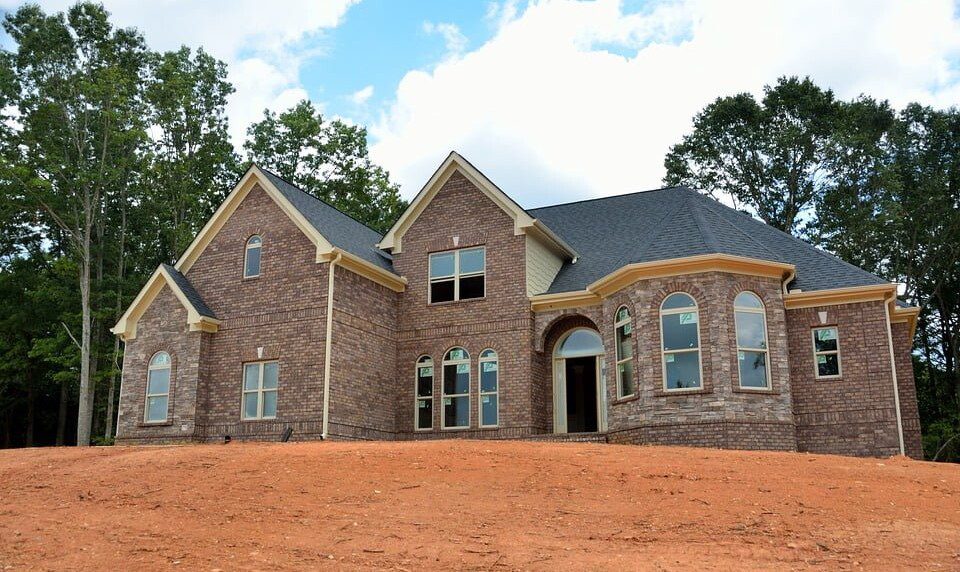
For many people, the biggest single financial investment they will make in their lives is in their home. This is doubly true when that home is a custom home, built to the homeowners’ specifications. It can be a daunting undertaking, from deciding what you ultimately want to finding the right site to securing financing for the project.
If you’re building a brand new home from scratch, here are a few things to consider keep to make the process a little easier –– so when all is said and done, you’ll have a gorgeous custom house you can call a home!
1. What’s Your Dream?
Start by imagining your ultimate dream home. Is it a gracious Tudor or a rustic yet glamorous cabin? Do you want a traditional brick home or a modern style that incorporates metal fabrication into the aesthetic? Once you have a good idea of what you’re looking for, interview some architects. You’ll want to get a sense of their taste and personality to make sure you’re on the same page. Review their galleries of previously completed projects so you can be sure they’ll be able to help you realize your vision.
If you aren’t able to nail down every detail right away, don’t sweat it: changes are to be expected as you go through the process and a few things here and there will be different in the final product. The important thing is to make sure the overall home is what you envisioned.
2. Financing Is A Little Different
If you’ve ever purchased an existing home listed on the market, you’re familiar with the process of applying for a mortgage. With a custom built home, a construction loan is used, which pays the builder with the completion of each stage. You’ll want to have your plans and timeline ready when you start looking into these loans so that the bank will know what to expect. Having all your ducks in a row makes the process much smoother. If you existing financial institution is not being able to fulfill all the requirements, chances are you would need some extra financial assistance. There are several reputed hard money lenders in San Diego which offer flexible financial assistance suited to your needs.
3. Where Are You Building?
Whether you’re building in a planned unit development or on a big rural property, there are bound to be rules and regulations for exactly what you’ll be able to construct. If you’re interested in a subdivision, consider that there may be guidelines in place that will determine the size and style you’ll be able to choose from. If you’re building in a standard city neighborhood, keep setback requirements and height restrictions in mind for your home.
In a more rural setting, you’ll have more options, but you may also be contending with slightly more unpredictable terrain, such as unlevel land and other natural phenomena. The good news is that you’ll have more land to work with to mitigate those limitations. However, the expense of running utilities to the site may add to the cost factor, so that is definitely something to keep in mind.
4. Work With Your Builder
Just like with your architect, you’ll want to be sure your builder is on the same page you’re on. Are you someone who wants to be a part of the process from start to finish or would you prefer to step back and let someone else take charge? Be sure the builder you select knows what you’re expecting so you can both determine if your management styles mesh well. This will avoid conflicts down the line and possibly spare some sore feelings.
5. How Custom Do You Want It?
When you think about a customer home, how much input do you want? There are a few ways to go. You can essentially work with your architect and builder to design your house from the ground up, making every bit of it your exact vision, which is certainly a tempting option. But you can also look at builder-owned subdivisions in which they have sets of floorplans for you to choose from. This is known as a semi-custom build option.
If you go with the semi-custom build option, you’ll be choosing from set designs that meet the subdivision standards, but you’ll have tons of freedom to choose things like the layout, interiors, fixtures, and other details that will set the house apart and make it your own. It’s a great choice if you’re wanting a home that has all of your own creative touches but you don’t want to have to design it all yourself.
6. Leave A Little Wiggle Room In Your Budget
Things happen. You might find that the site you’ve chosen for your home has some soil or drainage issues that have to be dealt with or that there is an issue with zoning regulations that requires changes to the plans. You may even find that materials or labor issues arise during the construction process. Be prepared for those surprises and leave yourself a little space money-wise.
One way you can make those unplanned events a little easier to take is to keep in close contact with your builder, which goes back to finding a builder with whom you can communicate well. Let him or her know what you can afford and that you may be obligated to stick closely to that figure. That way, if the unexpected does occur, they’ll have all the options at their disposal to present to you so you can work together to find the best solution. Frequent check-ins will keep those molehills from turning into mountains.
You may find that you’re the one making changes, such as seeing that the arched doorway you imagined doesn’t work out as well in practice or that the fixtures you’d dreamed of don’t work so well in the finished space. You may be able to make a change, even well into the process, but remember that those changes will come at a premium. This also goes back to knowing what you want in the beginning so that you aren’t the one costing you more money.
Get Ready To Love Your New Home!
Once construction is complete, you’ll be rewarded with the chance to move in to the home of your dreams. It’s the ultimate opportunity to create something uniquely yours, so don’t forget to have fun on the way!
Read More:






























